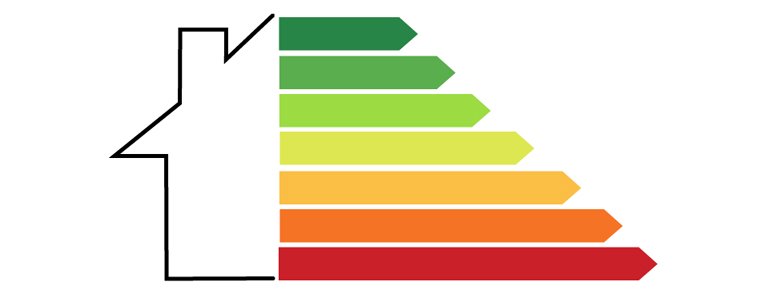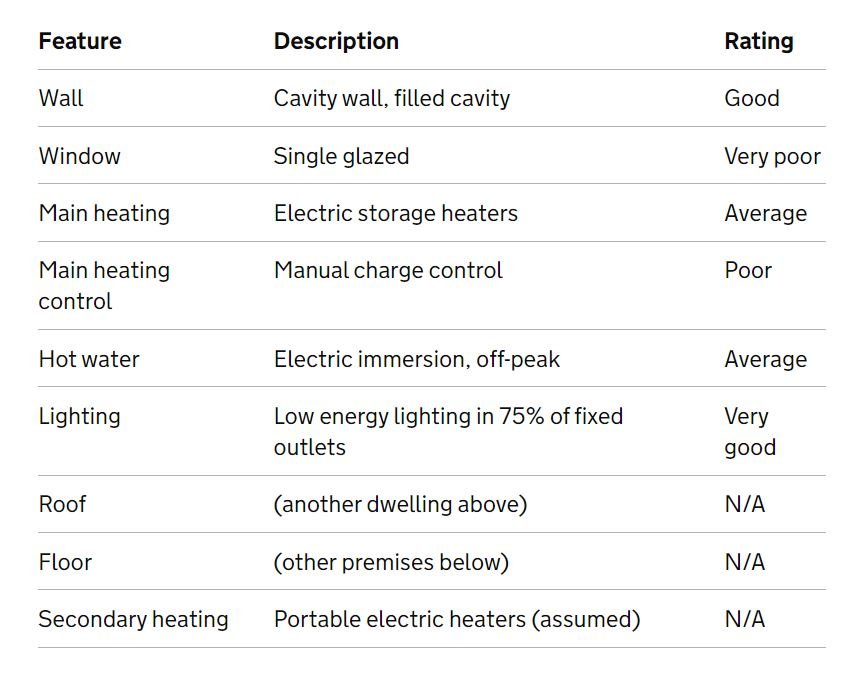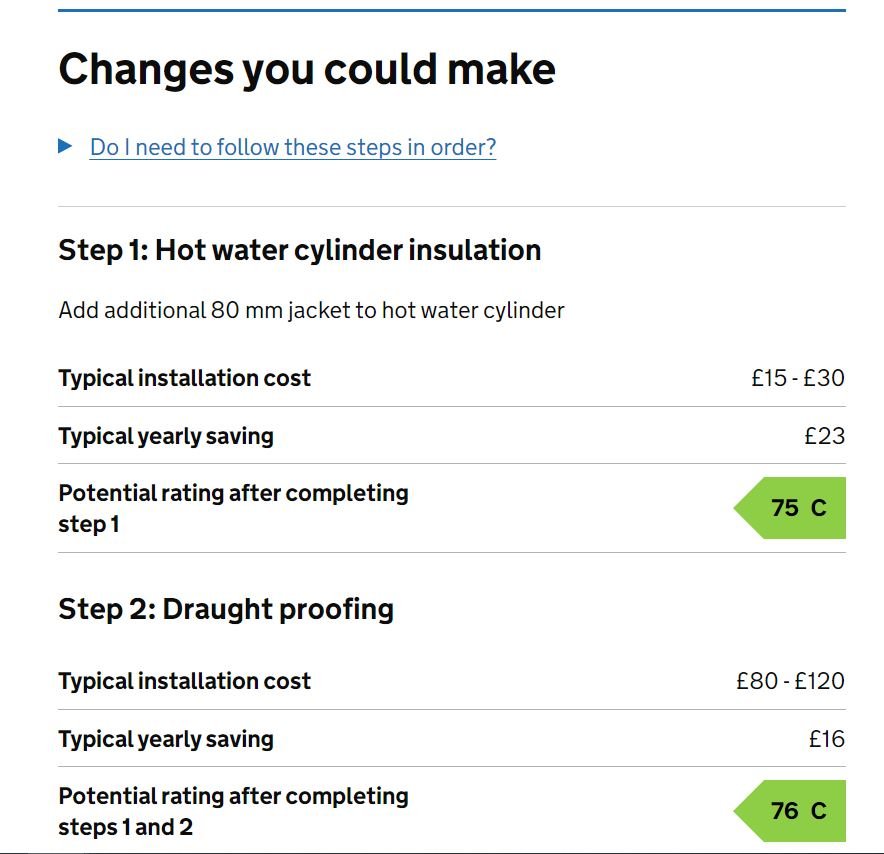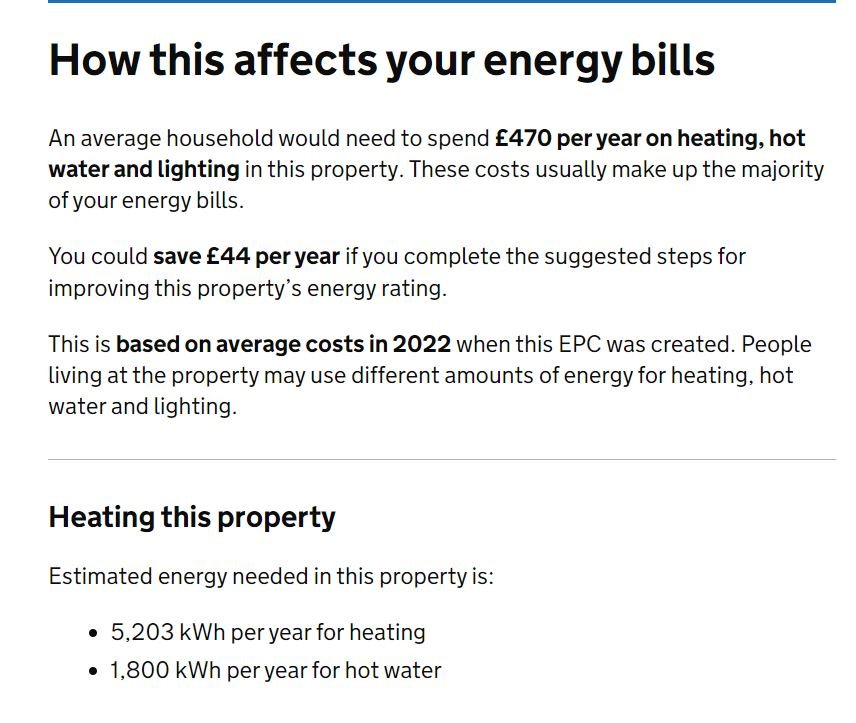What is an EPC?
An Energy Performance Certificate (EPC) is a legally recognized document that offers an energy efficiency rating, shown on an A-G scale, which reflects a property’s operating costs. This rating considers both the inherent energy performance of the building structure and its systems, including heating, lighting, and hot water.
Furthermore, the EPC document includes:
✅ A detailed analysis of the property’s energy performance
✅ An assessment of its environmental impact
✅ Suggestions for enhancing efficiency
✅ Estimates of energy consumption and potential savings
It’s important to recognize that properties are utilized differently. The energy efficiency rating is based on ‘standard occupancy’ assumptions, typically involving two adults and two children, which may not accurately reflect the actual usage of heating and lighting by the residents.
You can find a property’s EPC by searching its postcode on the following sites:
Property in England, Wales or NI: https://www.gov.uk/find-energy-certificate
Property in Scotland: https://www.scottishepcregister.org.uk/

When do I need an EPC?
In the UK, an Energy Performance Certificate (EPC) is mandatory whenever a property is put up for sale, rent, or has been newly constructed. The EPC remains valid for 10 years, or until a more recent EPC is issued for the same property. It is advisable to provide the EPC to potential buyers or tenants as soon as the property is listed for sale or rent.
How to read an EPC
The contents of an Energy Performance Certificate (EPC) vary based on the location within the country and whether the property is an existing or new build. In England, Wales, and Northern Ireland, EPCs are accessible online in full, while in Scotland, they are provided as PDFs.
All EPCs begin by displaying essential information about the property, including the address, type of property, and floor area. At the end or on the back of the EPC, you’ll find complete details of the assessor, including their name, contact information, and the accreditation scheme they belong to. If you have any questions regarding the EPC, it is highly recommended to contact the assessor directly as your first point of contact.
The energy efficiency rating
The energy efficiency of buildings is rated on a scale from A to G, with A representing the most efficient and G the least efficient.
Each EPC not only shows the current energy efficiency rating of the property but also a potential rating, which reflects the efficiency level achievable after implementing all recommended improvements.
In England, Wales, and Northern Ireland, the current EPC rating is prominently displayed at the top of the certificate.
The rating itself is based on various cost-related factors, including the type of fuel used for heating, hot water, lighting, and ventilation. Properties using mains gas typically receive a higher energy efficiency rating compared to those using electricity, due to the lower cost per kWh of gas compared to electricity.

Breakdown of a property’s energy performance
The EPC assesses each building feature—such as walls, windows, and hot water systems—based solely on its energy performance, without evaluating the actual working condition of the feature.
In England, Wales, and Northern Ireland, features are rated on a scale from ‘very good’ (most efficient) to ‘very poor’ (least efficient). This rating is derived from the energy cost efficiency and the environmental (CO2) impact.
In Scotland, on the other hand, each feature is rated up to 5 stars for both its energy performance and environmental impact.
It’s important to note that no ratings are provided for floors or secondary heating systems. Additionally, descriptions for new build properties may differ.

Environmental impact of the property
Similar to the energy efficiency rating, the environmental impact of the property is also rated from A to G.
This rating is based on assumptions about average occupancy and energy use, which may not accurately reflect the actual energy consumption patterns of the residents.
Additionally, you can compare the property’s CO2 emissions to other households and see the potential reduction in CO2 emissions if the recommended improvements are implemented (this is specifically rated in Scotland).
Recommendations and Top Actions for improvement
You will receive a list of suggested measures to enhance the property’s energy performance.
The indicated costs (for Scotland) or typical installation costs are based on average prices and may not reflect the actual expenses in your area.
The recommendations are designed to be implemented in the sequence they are listed on the EPC to achieve the projected energy efficiency rating. Deviating from this order could alter the expected energy efficiency outcome.
Additionally, the Scottish EPC will detail how these recommendations could improve the environmental rating post-implementation.

Estimated energy use for the property
The estimated energy cost for the property indicates the typical expenditure for heating, lighting, and hot water for an average household. It does not account for the actual energy usage patterns of the current residents.
The potential savings are calculated based on the implementation of recommended measures.
In Scotland, Domestic EPCs display the average and potential costs for heating, lighting, and hot water over a three-year period, instead of annually.
Additionally, this section includes information on the property’s heating use (or heat demand), which estimates the energy consumption in kilowatt-hours (kWh) per year.


